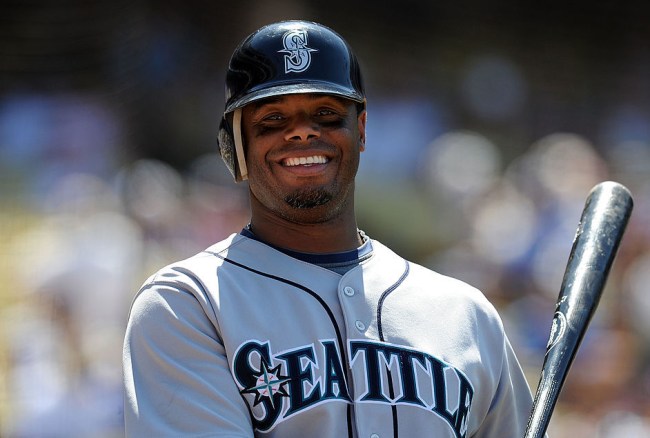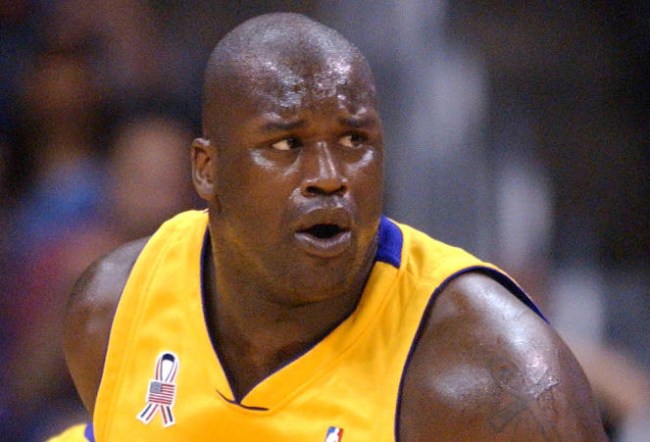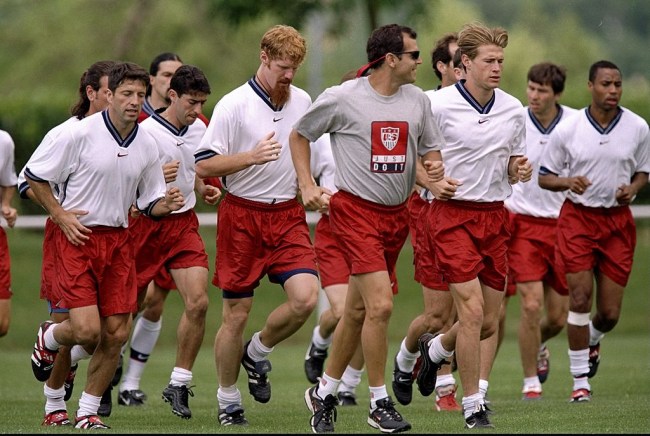
ESPN
The Last Dance is finally over. We all knew that the ten-part documentary about Michael Jordan was going to end at some point whether we wanted it to or not, but now, all we can do is accept that it has and move on.
But what exactly do we move on to? Is there anything ESPN (or any network for that matter) could whip up that could come close to matching the hype that surrounded The Last Dance? It’s hard to say.
The docuseries seemed to have it all: a larger-than-life figure who served as the subject, nostalgia, greatness, controversy, wild characters, new revelations about seemingly old stories, and more. The Last Dance both reminded people of the unmatched greatness of Jordan and introduced him to a new generation that had only heard about him but never got the chance to actually see him play.
I think it helped that some people were able to go into their memory bank and look back fondly on their favorite Jordan moments. If you’re a certain age, you remember those first few titles and you remember the shock of his first retirement. You remember him coming back, the strangeness of seeing “45” on his jersey, and then him rattling off three more championships.
The personal connections to those events made The Last Dance just hit harder than it normally would. Sure, a ten-part documentary about someone like Mickey Mantle or Bill Russell would be cool but it wouldn’t have the same impact, as the number of people currently alive who saw either of them play pales in comparison to those that watched Jordan.
So who would have the same effect?
ESPN has a more traditional documentary about the late Roy Halladay coming up but we’re going to need something more than that. Halladay was great but his story doesn’t have the levels and depth needed to hold our interest for as long as Jordan did. We’re going to need a tale that can only be told in multiple parts with storylines shooting out all over the place as well as a wild cast of characters and the delightful rush that only some sweet nostalgia can provide.
Obviously, it’s going to be hard to find a subject as compelling as Jordan but I think we can get close with one of the following five possible candidates.
Ken Griffey Jr.

Getty Image
Let’s. Do. This. Let’s do this now. Actually, let’s first ask why it hasn’t been done yet and then let’s get this doc rolling.
Everyone loved The Kid back when he was playing and I’m of the opinion that he’s not remembered as fondly as he should be, as it seems like a lot of people feel he didn’t entirely live up to the enormous expectations that were bestowed upon him. Apparently, some people need you to do more than hit 630 home runs over the course of your career—enough to put him seventh on the all-time list—to be impressed.
Sometimes expectations are ridiculous.
A Griffey doc would have some major potential. He was one of the biggest names in baseball despite having the audacity to frequently wear his hat backward. There isn’t a sport out there that loves its tradition more than baseball and wearing a hat backward during batting practice or a home run derby felt like a subtle slap in the face to that tradition.
You also have the dad angle, as Ken Griffey Sr. was a member of the mighty Cincinnati Reds back in the 1970s. You could dedicate an entire episode to the role the elder Griffey played as part of the Big Red Machine and the impact he had on the future Hall of Famer—who was in the clubhouse taking it all in when the team won the World Series in 1975 and 1976— culminating in the duo becoming the first father and son to play on the same team when they joined forces on the Mariners in the early ’90s.
Griffey eventually left Seattle for Cincinnatti in 2000, a move that marked the start of a decade-long slide from the heights he had reached prior to that point. A string of injuries took its toll and Griffey eventually retired as a member of the Mariners in 2010 when a “scandal” dubbed “Napgate”—which stemmed from a report claiming he had fallen asleep during a game—helped bring his career to an abrupt and fairly quiet end.
Pop culture icon! A generational talent! Multi-layered backstory! Some controversy (albeit a lame one, but it was still a “-gate”)! The Ken Griffey Jr. story has it all and someone needs to tell it sooner rather than later
The Bash Brothers

Getty Image
Griffey burst onto the scene in a big way in the ’90s but there’s also a great opportunity to give baseball fans who grew up a bit earlier a chance to get their nostalgia scratch itched in the form of a docuseries about The Bash Brothers, the dynamic duo that consisted of Jose Canseco and Mark McGwire during their time together in Oakland.
Sure, The Lonely Island has already tackled the topic but I think it could use some more historically accurate revisiting.
Part of the reason why The Last Dance worked so well was because of the nostalgia factor and a series about The Bash Brothers would provide one hell of a fix. From 1987 to 1992, McGwire and Canseco were the biggest draw in Major League Baseball, captivating crowds with their mammoth home runs and having their signature celebration mimicked by everyone to kids playing Wiffle ball in the backyard to players that competed at the 1988 Summer Olympics.
There was also the iconic poster that hung on the bedroom wall of roughly 80% of young fans that featured Canseco and McGwire posing in front of an Oakland police car (playing off the look made famous by John Belushi and Dan Aykroyd’s Blues Brothers characters). It might not be enough to fill an entire episode on its own but it could certainly be the centerpiece of one that details the duo’s cultural resonance.
The Bash Brothers weren’t just a show; they were also the centerpiece of an Athletics team that went to the World Series three years in a row, winning one of them in 1989 when they beat the Giants in a series that’s perhaps primarily remembered for the earthquake that rocked the Bay Area right before the start of the third game.
So, we have a story involving cultural phenomenons who dominated their particular sport and a wild subplot involving a natural disaster. But what about a controversy or a scandal?
Steroids, buddy. There’s your scandal.
Rumors about Canseco’s steroid use got rolling in 1988 when a reporter from The Washington Post claimed he was “the most conspicuous example of a player who has made himself great with steroids.” When you consider Canseco was a 15th-round draft pick, it wasn’t exactly unreasonable to question how he’d managed to gain 20 pounds and transform into a guy who could regularly hit over forty home runs and steal the same number of bases every season.
Canseco denied the allegations but they dogged him for the remainder of his career, and in his 2005 autobiography, he finally copped to using steroids back in the day. In the book, Canseco also outted McGwire as a steroid user, which wasn’t the first time he’d been labeled one, as rumors had swirled around him since the historic 1998 season where he topped Roger Maris’ long-standing home run record (he’d eventually admit what everyone knew in 2010).
As a result, the only real competition The Bash Brothers have when it comes to earning the coveted honor of being the face of baseball’s Steroid Era is Barry Bonds. If we’re focusing solely on their playing career, it might be hard to find enough material to make a documentary about their time on the A’s but there’s more than enough meat on the bone when it comes to the steroid angle to really flush the project out.
If not, you could always devote an episode or two to their teammate Rickey Henderson. No one is going to complain about that—especially not Henderson.
Shaquille O’Neal

Getty Image
Some people might dismiss this suggestion because they feel like they already know everything there is to know about Shaq but I’d be skeptical that they know as much as they think they do about his life before his days at LSU, as there’s a good chance they’re conflating his actual backstory with that of his character from Blue Chips.
It’d be an honest mistake, and if that’s the case, rest easy. You’re not alone.
It also might feel like Shaq has been in our lives forever because, in a way, he almost has been. He was drafted in 1992 and didn’t retire until almost twenty years later. Over that time span, he was one of the most prolific and popular athletes in the world.
In addition to being one of the most dominant players in NBA history, O’Neal also teamed up with a handful of others who are part of that discussion, including Kobe Bryant and LeBron James along with some other impressive names like Steve Nash, Dwyane Wade, Penny Hardaway, Kevin Garnett, and Paul Pierce. Shaq’s story almost can’t be told without talking about his relationship with those guys.
O’Neal’s performance on the court and the championships, accolades, dust-ups with teammates, and injuries that came with it are compelling enough on their own but what he’s done off of it over the years is just as interesting. In addition to being a professional basketball player, O’Neal’s other ventures include acting, recording multiple rap albums, pursuing a career in law enforcement, and serving as one of the more engaging and insightful basketball analysts out there.
Back in the day, MTV used to have a show called True Life with a tagline that stated: “You think you know, but you have no idea.” That same line could be used for the Shaq doc because, well, it’s true.
Mike Tyson

Getty Image
Isn’t this the next logical choice? It has to be, right?
Sure, there have been other documentaries about Iron Mike (not to mention a handful of books) and Tyson even did a one-man show on Broadway last decade. But it’s not as if there weren’t already books and films about Michael Jordan before The Last Dance.
The beauty of The Last Dance is how it pulls from all of those existing sources and then builds upon them. The same can be done when it comes to making a lengthy doc about Tyson.
Like Jordan, Tyson was a larger-than-life figure who dominated both his sport and pop culture. The hype train started pulling out of the station in 1986 when he became the youngest heavyweight champion ever when he won the WBC title at the age of 20 and only increased in speed as he approached his fight with Buster Douglas in 1990.
The idea of him losing just didn’t seem possible, but when he lost, he lost.
Even before he was upset by Douglas, Tyson’s life had started to unravel to such an extent that, in hindsight, the loss isn’t as surprising as it was at the time. But after that point, things took a noticeable turn. First, a rib injury forced him to bail on a fight with Evander Holyfield, and then in 1991, he was arrested for rape and was eventually sentenced to six years in prison (although he was released on parole after three years).
Once out of prison, Tyson embarked on a comeback that was initially successful, with him winning both the WBA and WBC titles (although in both cases, the level of competition was pretty suspect). The real test came against Holyfield, who had retired in 1994 and was involved in a comeback of his own. Holyfield won the first fight in November of 1996 and they stepped into the ring again in the summer of 1997 for a bout that’s best remembered for Tyson biting off some of Holyfield’s ear.
From there, things continued to go south for the former champ. His boxing license was revoked because of the whole ear-biting thing, he was arrested for assaulting a pair of motorists, and then lost a chance to regain the title when he was defeated by Lennox Lewis in 2002. Then there was a bankruptcy, a face tattoo, and an inevitable retirement from boxing.
Since then, Tyson has tried to make amends with his past mistakes and has been candid in looking back at how his troubled upbringing played a role in the decisions he would later make. Tyson’s childhood was notoriously rough, as he had been arrested 38 times by the time he was only 13 years old. He dropped out of high school in his junior year but his boxing ability seemed to save him from the road he looked to be headed down. Unfortunately, the sport wasn’t a long-term fix, as those problems dogged him for the rest of his life.
Tyson has made news recently with reports that he could be attempting a comeback in the wake of some training videos he has released. At fifty, a comeback would certainly be dicey and probably not in his best interest, but in the interest of making a documentary about him, that could be absolute gold.
The 1998 U.S. Men’s National Soccer Team

Getty Image
I don’t know if you’ve noticed, but it seems like there’s a recent trend concerning notable events that usually follows the same pattern:
- Something happens
- Someone writes about something happening
- Someone records a podcast about what someone wrote about something happening/li>
- A documentary is made about the podcast
- A fictionalized movie or limited TV series is made based off of the documentary (which itself was based on a podcast that was based on a written piece about something that happened)
For example, the Tiger King phenomenon started with a podcast that then became the Netflix documentary the world became obsessed with. Now, there are two different series about Joe Exotic and Carol Baskin in the works, which only promises to give us more stories to possibly start the cycle once again.
It’s the new circle of life.
So, for our fifth proposal, we’re taking a cue from a podcast—specifically American Fiasco, which was launched by Roger Bennett of Men in Blazers back in the summer of 2018. It told the story of the 1998 United States World Cup team, which was riding high after their success in the tournament in Los Angeles four years before.
Bennett dives all the way in with the help of players like Alexi Lalas and Eric Wynalda as well as Steve Sampson, their inexperienced head coach. It’s a story of high expectations and the egos that come with them, as the 1994 team had been a pleasant surprise and that success led to many members of the squad believing they were in a position to finally be able to get American soccer to be taken seriously on the world stage.
Heading into the World Cup, the team was anything but rolling. They arrived in France with aging veterans feeling underappreciated, young stars possibly too green for the big stage, and Sampson’s credibility being constantly questioned. The coach’s choice to have the team set up shop in the French countryside didn’t do him any favors, as the resulting boredom only served to make things worse.
Once the World Cup arrived, the Americans managed to overcome all of the aforementioned adversity and—oh, wait. Sorry. They actually lost every single game they played on their way to being swiftly eliminated.
Part of what makes American Fiasco so compelling is Bennett’s ability to link the problems the 1998 team had with the current issues the country’s program is facing, as the United States wasn’t even able to qualify for the chance to embarrass themselves again in the most recent World Cup and currently looks to avoid the same fate ahead of the next one.
It’s still unclear who will be playing in Qatar, but if we hurry up and make this, maybe they can learn from some of the mistakes that were already made.